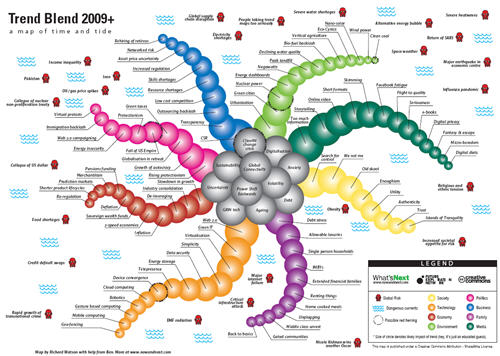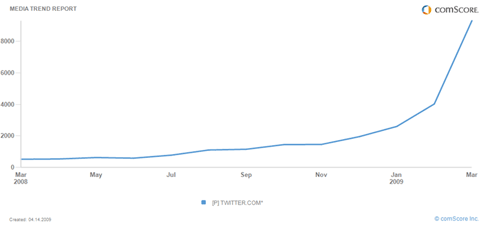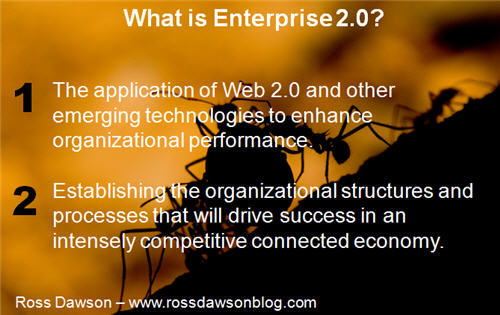Following our extremely popular Trend Blend 2007 and Trend Blend 2008 trend maps comes…. Trend Blend 2009!
Created by Future Exploration Network’s Chief Futurist Richard Watson, also of NowandNext.com, the 2009 trend map moves on from the subway map theme of the last years to show the multi-tentacled hydra that is the year ahead.

Click on the map to download the pdf (810KB)
To pick out just a few noteworthy elements of the trend map:
CORE THEMES include:
Uncertainy
Ageing
Global Connectivity
Anxiety
Power Shift Eastwards
SUBJECT THEMES include:
SOCIETY: Search for control, enoughism
TECHNOLOGY: Simplicity, Telepresence, Gesture based computing
ECONOMY: De-leveraging, 2-speed economies, Shorter product lifecycles
ENVIRONMENT: Bio fuel backlash, Negawatts, Nuclear power
POLITICS: Virtual protests, Globalisation in retreat, Immigration backlash
BUSINESS: Networked risk, Transparency, Asset price uncertainty
FAMILY: Debt stress, Allowable luxuries, Middle class unrest
MEDIA: Flight to quality, Facebook fatigue, Skimming, Micro boredom
POSSIBLE RED HERRINGS include:
Climate change crisis
Fall of US Empire
Nuclear power
Device convergence
GLOBAL RISKS include:
Major Internet failure
Influenza pandemic
Major earthquake in economic centre
Obesity
Electricity shortages
People taking trend maps too seriously
As usual, this is released on a Creative Commons license, so feel free to play with it, adapt it, and improve it!
Wishing everyone a fabulous 2009 – be sure to take advantage of these upcoming trends!



